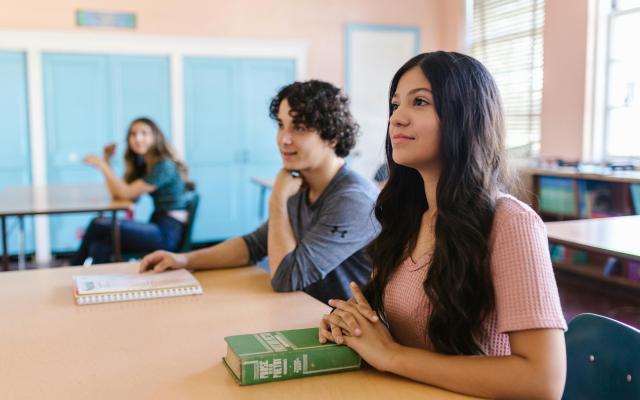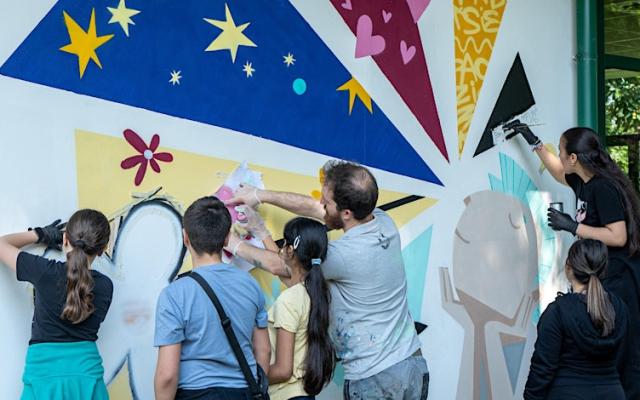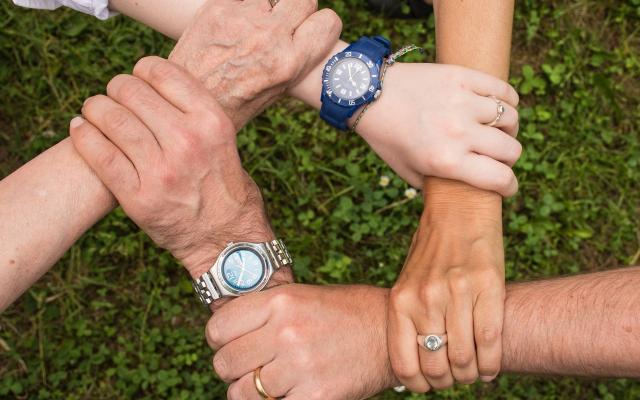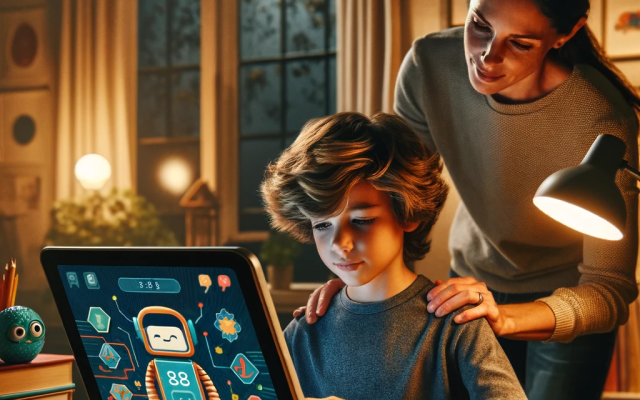Discussion groups among teachers: the experience of Maria Farinella from Falcone Righi in Corsico
Maria Farinella, support teacher at the Falcone Righi high school in Corsico (Milan), took part in the focus group for high school teachers as part of the Pathway Companion project. His school was founded in 2012 from the merger of two institutes, a commercial technical institute and an industrial technical institute, with a rich educational offer in the economic sector (addresses: administration, finance and marketing; international relations for marketing; business information systems), in the technological sector (addresses: IT-telecommunications, IT articulation; electronics-electrotechnology, electronics articulation; graphics and communication). Moreover, since 2010, Falcone Righi has been enriched with the scientific high school applied sciences option and the high school of applied sciences-biology with a biomedical bent.
In your experience, how is technology used in education today? What is the level of digital literacy in Italian schools?
Before talking in general about the level of digital literacy in schools, I would like to say that the institute where I work, as it has an IT orientation, has always been encouraged to keep up with the times. We were among the first to adopt new technologies, becoming forerunners in the use of the internet as well as in the design of content for the web. But we have never been an ivory tower: Falcone-Righi has played a leading role with respect to the other schools in the area because since the end of the 1990s we have taken charge of training in the area, making our skills available and becoming a reference centre for digital. Today, the level of awareness of the importance of digital has grown a lot, even if it is still conditioned by the state of each school's technological infrastructure. Thinking about territorial disparities, however, we know that schools are being reached by many project proposals to compensate for operational difficulties. In this sense, the PNRR has proved to be a very useful support! Thanks to the Piano Scuola 4.0 call for proposals, we too have transformed traditional environments into flexible laboratories designed to encourage experimentation, facilitate cooperative learning and teamwork.
We were able to benefit from new tools for teaching and training teachers. Today, on Scuola Futura, the platform with training courses for teachers, schools have many proposals that are proving to be very successful.
As for the use of technology in the area of disability and special needs, there is much to be done. The use of technology can support the participation of students with special educational needs (BES) and foster teacher training on the regulations and principles of inclusive education.
A fundamental and improving aspect of this process, in our school, is the automated management of the documentation of students with Special Educational Needs, especially considering the increasing number of students who require customised support. To give an example, this year we drew up some forty Individualised Education Plans (IEPs) and around 230 Personalised Education Plans (PDPs)) on a total of 1,360 students.
Given this great commitment to inclusion in the school, what is the situation of children with special educational needs, in particular with learning disorders? What digital tools are used?
Much has been done for the inclusion of students with BES, but critical issues remain. Preparation on inclusion issues is not yet widespread and this can make the personalisation of teaching and the use of digital compensatory tools for students with SLD problematic. Precisely for this reason, at Falcone Righi, we have had a DSA contact person for several years now, who is fundamental for supporting colleagues!
Speaking of digital tools, in all classrooms we have interactive monitors, very useful and versatile tools that allow greater involvement of students with learning disorders.
Students with DSA are urged to use digital books and create concept maps to organise information so that it is easier to understand and remember.
These maps can be used during class tests, but this can raise many questions... what are the limits to this use? How detailed can they be? Collaboration between teachers and students is important here!
Other useful tools for these students are speech synthesis programmes that read texts moderating the speed as needed, screen reading tools or programmes for creating interactive digital worksheets.
Speech recognition can also be an excellent resource. There are several tools that allow students to dictate text instead of writing it manually, reducing the effort and time needed to complete written tasks, even implementing predictive writing functions.
To what extent can the Pathway Companion project support the teacher, parent and caregiver in the home and school learning of pupils with learning disabilities?
Here, a pathway such as Pathway Companion could answer the questions we posed earlier. Personalised teaching! I think it is essential to have a tool that, starting from a well-defined request and indicating a specific need, delivers personalised content. I would like a tool capable of offering a 360° content search, with easily accessible results, even using different search keys and starting points.
Would you be in favour of putting artificial intelligence at the service of cognitive disability?
I am very open about the use of AI for teaching and even more so about its use in the service of special needs. My experience is very positive and I think I already have a case history of very constructive use of AI. Children with BES have a rigorous approach: they almost never ask ChatGPT to complete an entire assignment for them, but to support them, for example, in understanding a certain concept. Unlike many students who have their homework done for them by artificial intelligence, the pride of a young person who wants to improve and reach the maximum of his or her possibilities, starting from a fragile condition, makes him or her an ideal candidate for virtuous use. In some cases, the AI can be asked to generate customised questions in the course of studying a specific topic.
The challenge for us teachers is to get the students to make a reasoned and conscious use of AI, and I believe that in support a technology based on generative AI can act in many directions: making life easier for us who support students, monitoring their progress, keeping track of training already experienced in the past. For the students, I am thinking of the benefit of reducing cognitive load, creating a less stressful learning environment with language more suited to the target group, promoting personal growth and ensuring that topics are constantly updated.
In this sense, did you find feedback from the proposed focus group experience?
It was an interesting moment, it was good to confront and share my experience. At first, I was worried that I would not be able to involve enough colleagues. Instead, they participated with pleasure and thanked me for the moment of growth and collective feedback on issues that we normally have to deal with alone.

By Alberta Testa, social media manager




